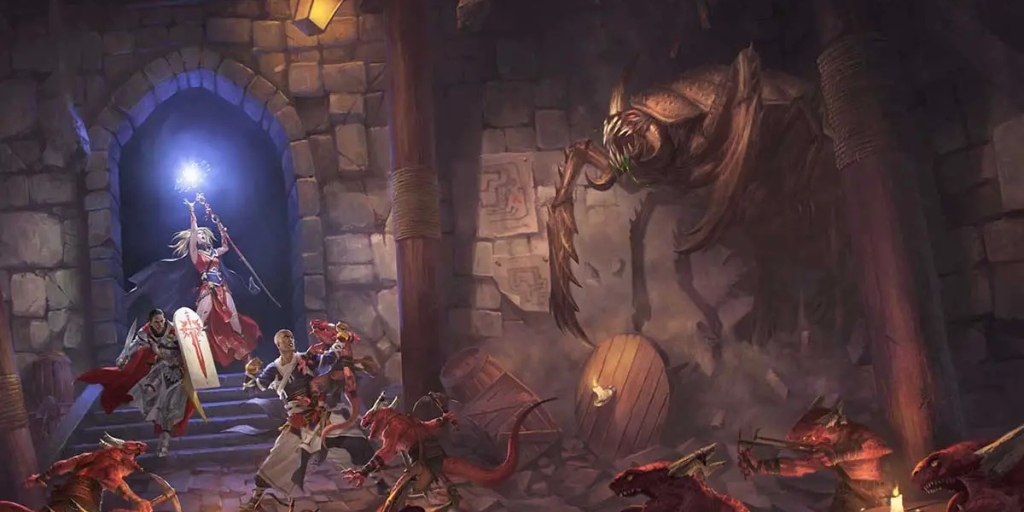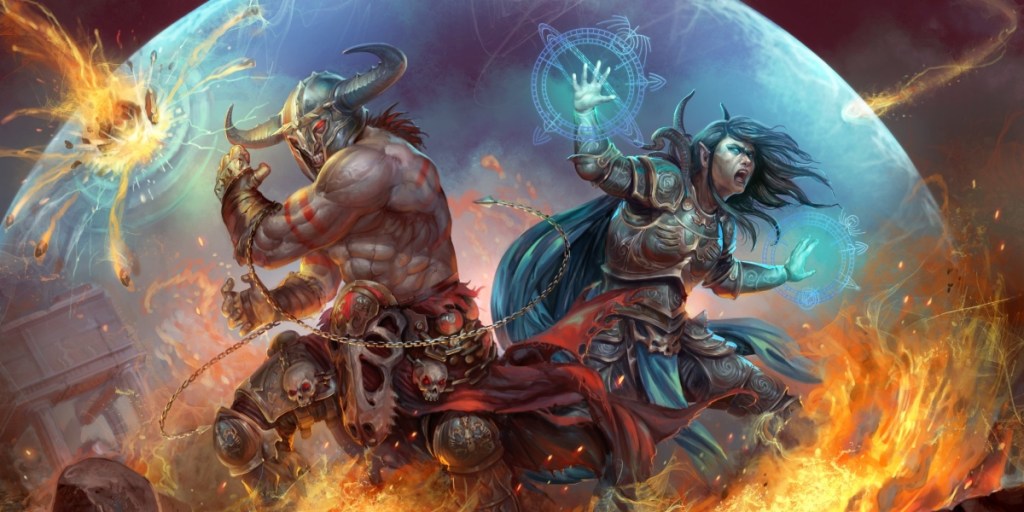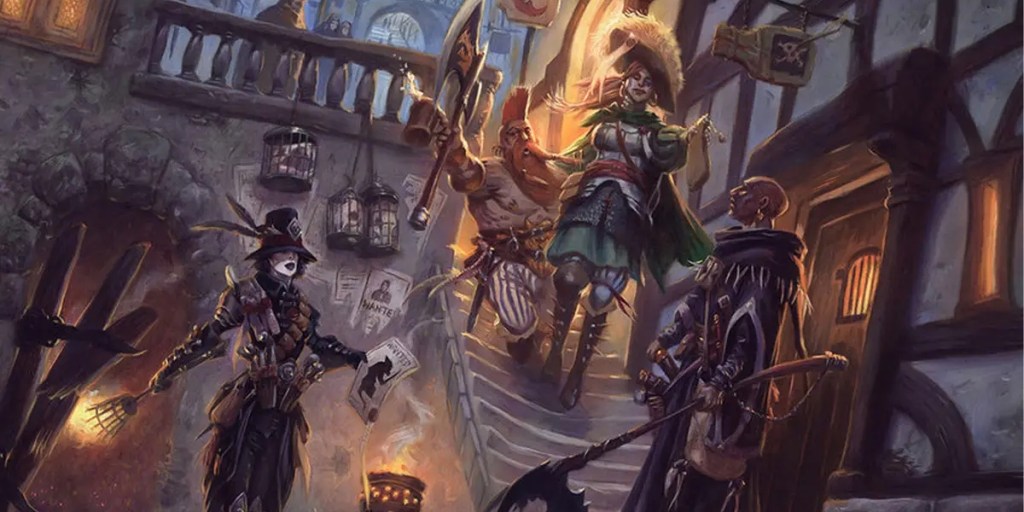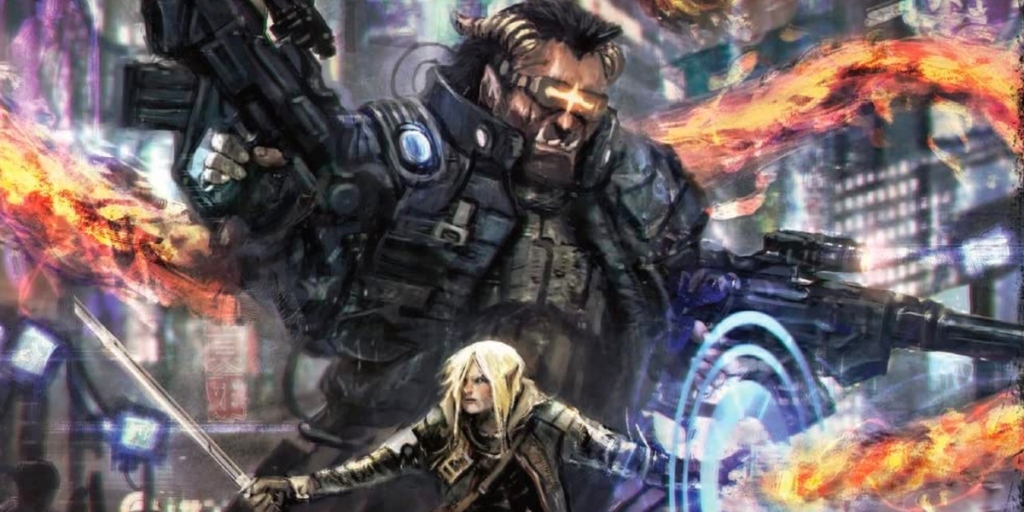Dungeons & Dragons Fifth Edition continues the legacy of the most popular tabletop roleplaying game ever made. Its immense boom in popularity has let it maintain its domineering presence over the hobby.
However, D&D 5e isn’t the be-all and end-all of roleplaying.
Don’t get me wrong, there is nothing wrong with playing D&D 5e. I’d also add that there’s nothing wrong with running a blog dedicated to it either.
Nonetheless, D&D 5e‘s rules and storytelling may not scratch every itch for every player. Others may be put off by Wizards of the Coast’s repeated PR disasters and want to support other companies. Many more still might simply want to enjoy D&D alongside other games.
Dungeons & Dragons has inspired its fair share of fantasy RPGs that are not itself. These span many different genres and playstyles, some of which are radically different from D&D 5e.
Pathfinder Second Edition Is Another Juggernaut

If a TTRPG player has dipped their toe into the hobby at all besides Dungeons & Dragons, they’re almost guaranteed to have heard of Pathfinder. It’s D&D‘s closest cousin and competitor, filling a similar niche of heroic fantasy adventure.
Pathfinder First Edition is little more than a redone version of D&D 3.5, with many of that system’s strengths and weaknesses. Pathfinder Second Edition takes much more drastic steps away from its inspirations and embraces its own identity.
The first thing many fans praise about Pathfinder 2e is its character creation. The game offers flexible yet guided character building that has players choosing feats and character abilities at every level.
It isn’t horrendously more complicated than D&D 5e while offering many more options, with new ones released regularly.
On the DM side, Pathfinder 2e has rules to cover most situations, a philosophical difference that some may prefer to D&D 5e putting the onus on the Dungeon Master.
Pathfinder 2e combat is less of an individually heroic affair and much more of a team effort. The party work together, using their many abilities to find the foes’ weaknesses and exploit them.
It’s pointless to try and gauge whether Pathfinder 2e or D&D 5e is better. They’re both delightful and well worth exploring, with the ranking being entirely subjective.
Blades in the Dark Is Story-First Steampunk Heisting

Blades in the Dark is a very different style of TTRPG to D&D 5e. Its most direct influences come from the Powered by the Apocalypse umbrella of systems. However, it’s different enough to spawn its own Forged in the Dark family.
Rather than a medieval-esque fantasy game about heroics, Blades in the Dark casts players as criminals and gangsters attempting to survive in a post-apocalyptic steampunk criminal underworld. And like, that’s a lot of cool words in one sentence.
Blades in the Dark lets players live out their criminal fantasies. Its base adventures are ‘scores’, where players go in with two primary goals: make money and come out alive.
The mechanics of Blades in the Dark are intuitive, with almost everything coming down to d6 dice rolls. The GM’s job is to interpret these through the lens of a system focused on maintaining drama and encouraging players to make unexpected moves.
Players don’t just create their reckless criminals, they also build up the entire group’s crime empire through mechanics that encourage expansion, gang warfare, and make-or-break heists to improve your crew’s reputation.
From its straightforward gameplay to its signature ‘Flashback’ mechanic, Blades in the Dark wants players to hit the ground running and tell the story of their amoral criminal empire.
Shadow of the Demon Lord Explores Grim Destiny

Shadow of the Demon Lord is a dark mirror to many versions of D&D. Fittingly, it’s created by Robert J. Schwalb, a man who has been influential to both those and the A Song of Ice and Fire Roleplaying Game. Dark seems to be the mood of the day.
Shadow of the Demon Lord follows destiny-touched adventurers shortly before the end of the world. The player characters’ roles are as much down to their fate as they are their natural aptitudes. Players roll up ordinary people, who then become far less ordinary as they adventure.
Many TTRPG players like Shadow of the Demon Lord for its morbid stylings and its intuitive rules, particularly for combat. Many more like it for its character-building.
Shadow of the Demon Lord characters go from a D&D-esque Novice path to an Expert path that opens new mechanical and storytelling avenues. At the highest levels, they choose a Master path that represents the apotheosis of their character.
These can be mixed and matched, with a character having almost endless possibilities ahead of them when they start their journey.
You have to appreciate a bleak and hopeless story to get the most out of Shadow of the Demon Lord. For those who do, however, it might be the best fantasy TTRPG around.
Warhammer Fantasy Roleplay Doesn’t Take It Easy

From grim to gritty. Warhammer Fantasy Roleplay isn’t any lighter than Shadow of the Demon Lord. However, it also lacks that game’s extravagance. Players don’t control heroes with epic destinies. They control able peasants who may well be doomed.
Warhammer Fantasy Roleplay lets players explore the infamous Warhammer Fantasy setting. Every bit of its dark humour and general grimness is on display, from its satire of Renaissance Europe to its horde of demons waiting to end everything.
Warhammer Fantasy Roleplay isn’t the only gritty TTRPG in existence. However, the extent of its low-magic, dangerous, oppressive ruleset helps it stand out.
Players create characters at the bottom of their career’s social ladder, with incentives to randomise as much as possible. They then have to use every bit of their wits and skill to survive Warhammer Fantasy Roleplay‘s brutal combat with the meager tools at their disposal.
The game exists for people who want to struggle for every victory, but have an immense amount of fun doing it. It’s not far off Dark Souls in its appeal, coupled with one of the richest and most beloved settings in fantasy tabletop gaming.
Shadowrun Does Strange Things with Cyberpunk

Cyberpunk is one of the most prestigious genres in the TTRPG world (to the point that the word itself comes from the eponymous Cyberpunk 2020 RPG). It ranks up there with fantasy for sheer adoration.
Naturally, somebody decided to smash the two together.
Shadowrun is an unconventional title where Elves and Orks run in street gangs while modern-day corporations flex their technological might over everybody else. If you ever wanted Harrison Ford to be a Gnome in Blade Runner, have I got some fantastic news for you.
Despite its strange premise, Shadowrun has a long history in the TTRPG world and a devoted fanbase. Its mixture of real-world mythology, classic fantasy aesthetics, and Cyberpunk action is like nothing else in the TTRPG world.
Shadowrun is also infamous for its frequently-janky rules. Each edition (and there are several) seems to break something new. Nonetheless, they’re more than playable enough to enjoy Shadowrun‘s unique setting and styling.
It’s an unconventional example of the genre, but Shadowrun is still one of the best fantasy TTRPGs around.
These have been five of the best fantasy TTRPGs that aren’t D&D 5e (which is also very good). I don’t actually yet have many non-D&D articles on Artificial Twenty. So, if you want to support me, please try checking out something like ‘Five Things D&D 5e DMs Can Learn From Baldur’s Gate 3‘.
In general, please do like this article if you’ve enjoyed it. Please share it around with your friends, and let me know your thoughts on fantasy TTRPGs in the comments!